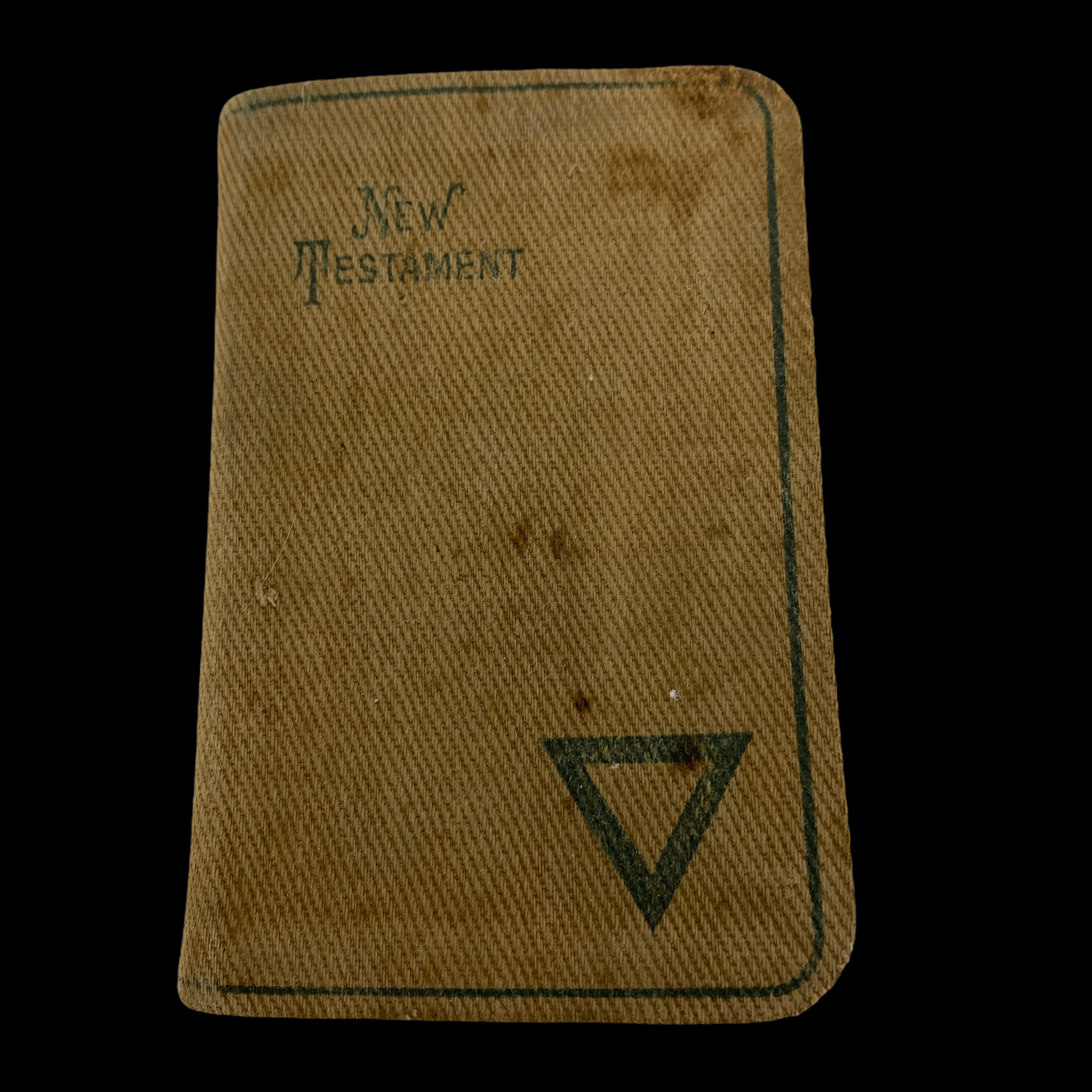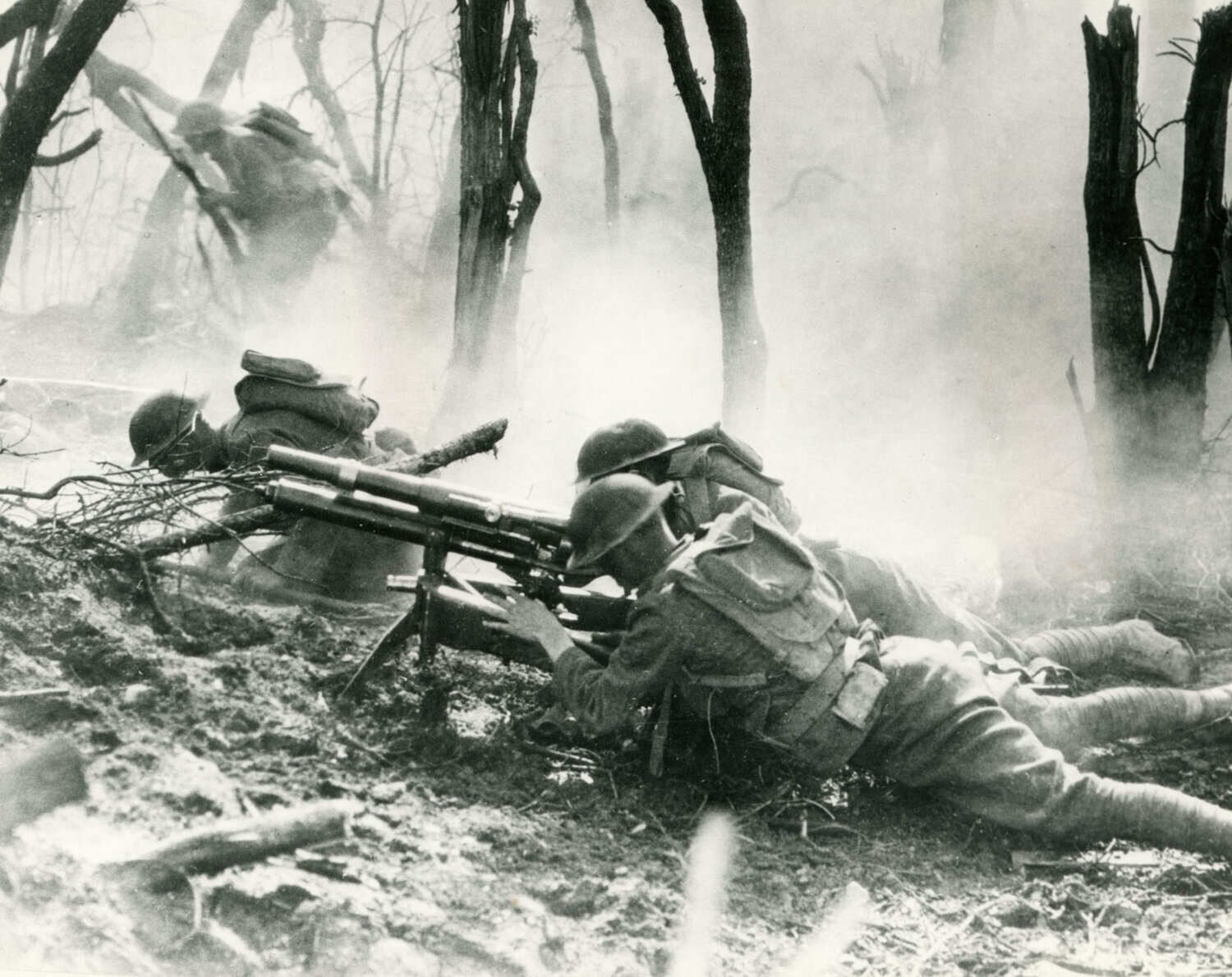Meuse-Argonne Offensive A.E.F. Sgt. George O. Heudey (Infantry) - 1917 Printed New Testament Bible























Meuse-Argonne Offensive A.E.F. Sgt. George O. Heudey (Infantry) - 1917 Printed New Testament Bible
This very rare named World War I Era soldier’s New Testament Bible is inscribed as presented by an A.E.F. chaplain at Verdun, France 10/8/1918. Named to a Meuse-Argonne Offensive veteran and A.E.F. soldier by the name of Sgt. George O. Heudey. Sgt. Heudey heavily inscribed notes and information in this bible as he kept this in his pocket during some of the most intense fighting seen by American units during WWI. This bible was printed by the American Bible Society in New York with a printed date of 1917. The Bible is in good condition with average wear and use with lots of stains from being carried in combat. The Bible was carried over the course of World War I by Sgt. Heudey who saw combat in the Hundred Day Offensive and a combat veteran of the Meuse–Argonne Offensive.
The The Meuse–Argonne offensive (also known as the Meuse River–Argonne Forest offensive, the Battles of the Meuse–Argonne, and the Meuse–Argonne campaign) was a major part of the final Allied offensive of World War I that stretched along the entire Western Front. It was fought from September 26th, 1918, until the Armistice of November 11, 1918, a total of 47 days. The Meuse–Argonne offensive was the largest in United States military history, involving 1.2 million American soldiers. It is the second deadliest battle in American history, resulting in over 350,000 casualties including 28,000 German lives, 26,277 American lives and an unknown number of French lives. Meuse–Argonne was the principal engagement of the American Expeditionary Force (AEF) during World War I. It was one of a series of Allied attacks known as the Hundred Days Offensive, which brought the war to an end. It was the largest and bloodiest operation of World War I for the AEF even if, given the scale of other battles on the Western Front, its size was limited and the operation itself secondary as it was far from the main offensive axis.
The inside of the New Testament Bible is heavily inscribed with Sgt. George O. Heudey's information. Bibles like this were carried by soldiers and were sometimes used as a separate identification tool if soldiers were killed in action. The binding of the Bible is in relatively good condition and the pages remain fully intact with some minor spots of staining on certain pages. This Bible is heavily inscribed with the soldier’s information. Information like this would have been used for contact tracing if the was killed in action and needed to be identified and the family notified.